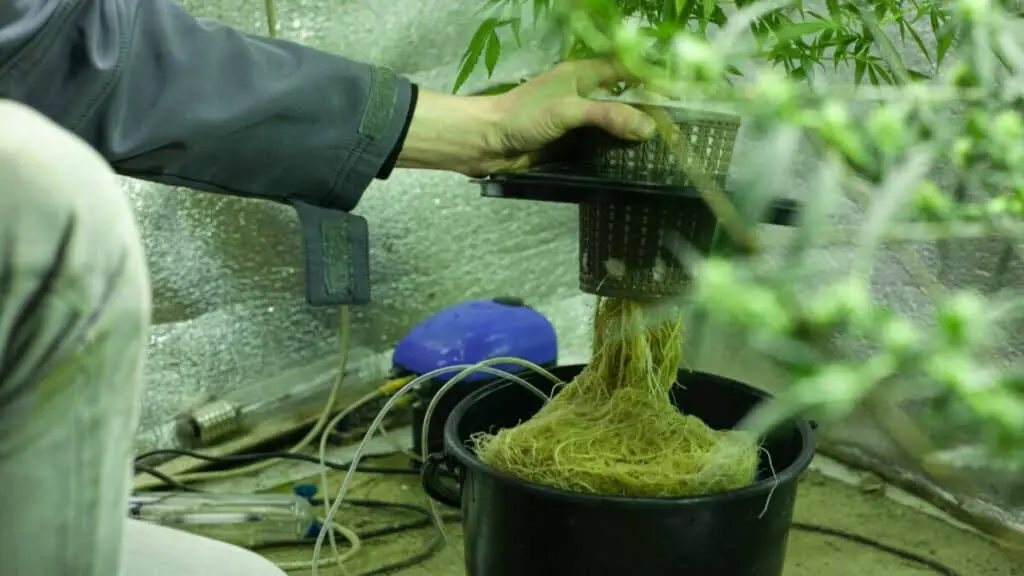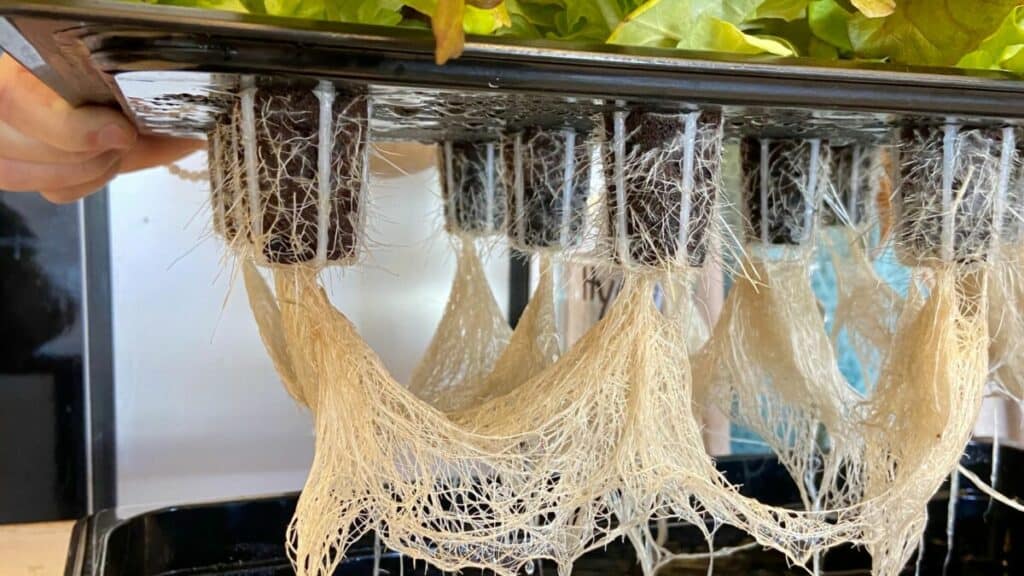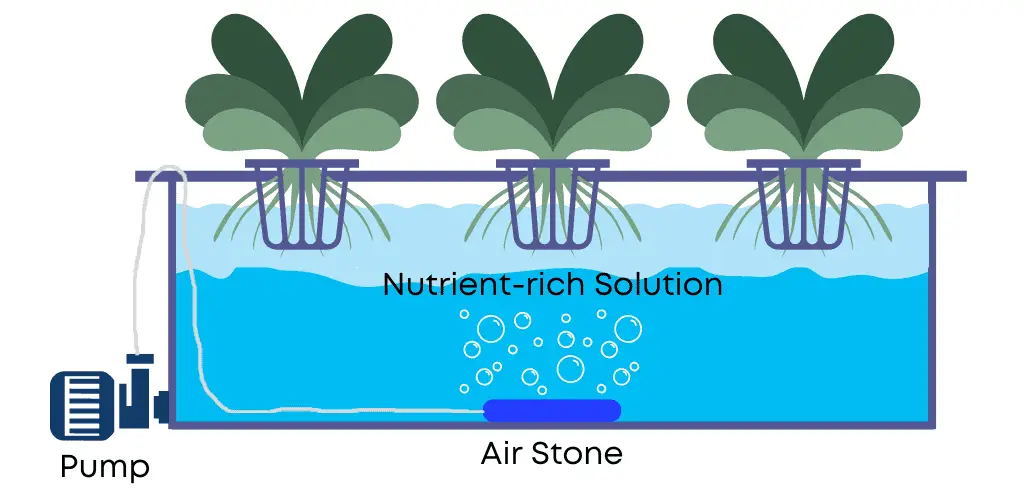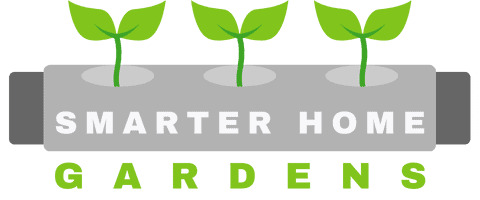
When growing plants hydroponically there are typically many things to consider. You have to ensure that you have the right pH levels, the perfect combination of nutrients and enough light. But something really important that all too often gets forgotten is air and oxygen. Ensuring your plants (and their roots) are well aerated is critical for healthy, sustained growth. It’s a relatively simple process, but getting exactly the right amount of air to your plants can be tricky.
Hydroponic plants need a steady supply of air and oxygen in order to grow well. The amount of air needed depends on the type of hydroponic system being used. Generally, a good rule of thumb is to provide 1-2 litres of air per minute for every gallon of nutrient solution in the system.
This article will cover everything you need to know about keeping your hydroponic plants properly aerated, why that’s important and what happens if you get it wrong. Let’s dive right in.
Why is air important in hydroponics?
Plants use air to grow strong by absorbing carbon dioxide (CO2) and using it to create energy through a process called photosynthesis. The CO2 is combined with water and light to create glucose, which is used as fuel for the plant. Oxygen is also released as a byproduct of photosynthesis.

This is particularly important in hydroponics where plants are often grown indoors or continually washed (or even submerged) with water/nutrients. Ensuring that your plants get enough air is essential to stop them from drowning and to maintain healthy growth.
Why oxygen is particularly important
Oxygen is essential for healthy plant growth in hydroponics. It helps to break down nutrients in the water, allowing the plant to absorb them more easily. Oxygen also helps to prevent root rot and other diseases caused by anaerobic bacteria. Finally, oxygen helps to keep the water aerated, which is important for the general health of the plant’s roots. Simply put, without oxygen, your plants may struggle to grow or even survive at all.
What happens if plants don’t get enough air?
If plants don’t get enough air, they will not be able to photosynthesise properly. This can lead to a decrease in growth, yellowing of the leaves, and even death. Additionally, a lack of oxygen can lead to anaerobic bacteria growth, which can cause root rot and other diseases. Therefore, it is important to provide your plants with enough air to ensure healthy growth.
Improving the airflow in your hydroponic system
Increasing the amount of air in your hydroponics system can be an essential tool for encouraging healthy plant growth. There are a few simple steps you can take to ensure your plants get the oxygen they need.
1. Adding an air pump
Adding an air pump to the system will provide a steady stream of oxygen to the roots of the plants. To ensure air is diffused throughout the reservoir adding an air stone is also a good idea.

2. Adding an air diffuser (air stones)
You can also add an air diffuser to your system which will help to distribute oxygen throughout the system which is vital for breaking down the nutrients so they can be absorbed more easily and for fostering healthy roots.
3. Increasing the flow rate
Finally, you can increase the amount of air in your system by increasing the flow rate of the water. This will help to ensure that the oxygen is evenly distributed throughout the system.
Choosing the right size air pump for your hydroponics system
The size and attributes of the air pump you need depend on the size and complexity of your system and the amount of oxygen you need to provide your plants. Here are the main things to consider when choosing an air pump for your hydroponics system:
1. Its size
First, you should determine the size of your system. This will help you determine the amount of oxygen you need to provide your plants. As previously stated, you should provide 1-2 litres of air per minute for every gallon of nutrient solution in the system.
2. Diaphram vs Piston
Next, you should determine the type of air pump you need. There are two main types of air pumps: diaphragm pumps and piston pumps. Diaphragm pumps are quieter and more efficient, while piston pumps are more powerful.
3. Pumping capacity
Finally, you should consider the capacity of the air pump you need. Generally, it would help if you chose an air pump rated for at least twice the amount of air you need for your system. This will help ensure that your plants get the oxygen they need to grow strong and healthy.
4. Noise
Some noise is always going to be expected with pumps but there are definitely those that make more of it than others. Considering it’s going to be running up to 10 hours a day I’d advise choosing one that is quiet, unless your hydroponics system is out of sight somewhere you can’t see or hear it.
5. The number of nozzles
The number of nozzles you need will again depend on the size of your hydroponics system. Larger systems, or those which you plan to upgrade, will benefit from a pump that has multiple different nozzles so that you can attach more airstones and other elements to help aerate the system. If you only have a simple, small system then this isn’t something you need to worry too much about. You can always split the airline tubing instead if you wish.
How long should you run the air pump?
The amount of time you should run your air pump in a hydroponic system depends on the size of your system and the amount of oxygen you need to provide your plants. You should run your air pump for at least 15 minutes in every hour. To do this you’ll also need a plug timer to regulate the flow of power to the pump.
This will ensure that your plants get the oxygen they need to grow strong and healthy. You may need to run your air pump for longer if your system is larger or if you need to provide more oxygen to your plants.

You can also adjust the flow rate of the air pump to provide more or less oxygen to your plants. Finally, you should also check your air pump regularly to make sure it is working properly. If your air pump is not working correctly, it may not be providing enough oxygen to your plants.
Are hydroponic air pumps expensive to run?
While the cost of these pumps can vary depending on the size and type, they are generally quite affordable. The cost to run a hydroponic air pump is relatively low. Most pumps use only a few watts of power, so they don’t require a lot of electricity to run. Additionally, the pumps are designed to be energy efficient, so they won’t add significantly to your electricity bill.
The cost of replacement parts for hydroponic air pumps is also quite low. Most pumps use only a few basic parts, so it’s easy to find replacements if something breaks. This makes it easy to keep your pump running without breaking the bank. Overall, the cost to run a hydroponic air pump is quite low. If you’re looking for an affordable way to provide oxygen to your plants, a hydroponic air pump is a great option.
To sum up
It helps to break down nutrients in the water, allowing the plant to absorb them more easily. Oxygen also helps to prevent root rot and other diseases caused by anaerobic bacteria. Finally, oxygen helps to keep the water aerated, which is important for the health of the plant’s roots. For these reasons, it is important to provide your plants with a steady supply of oxygen.
This can be done by adding an air pump and air stones to the system, as well as an air diffuser to distribute the oxygen throughout the water evenly. Additionally, you should increase the flow rate of the water to ensure that the oxygen is evenly distributed throughout the system. By following these simple steps, you can ensure that your plants get the oxygen they need to grow strong and healthy.
